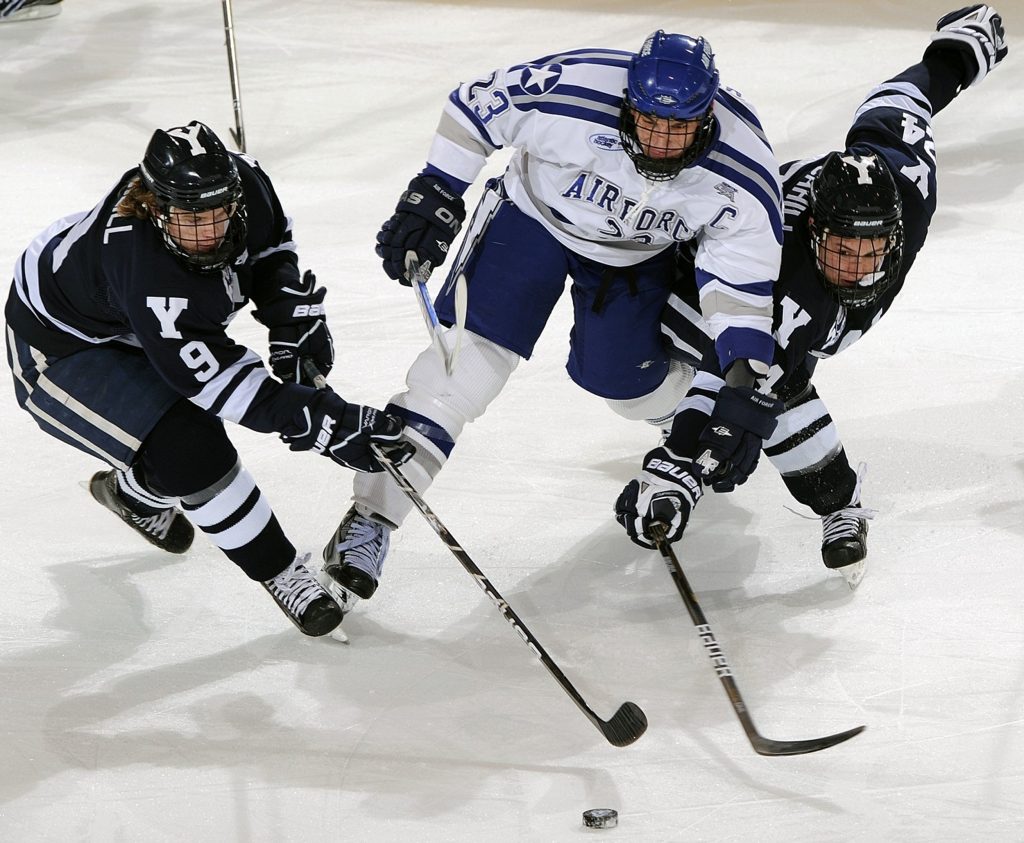
Hockey, with its lightning-fast pace and intense action, provides a thrilling canvas for photography enthusiasts to capture unforgettable moments. Whether you’re a parent cheering on your child at a local rink or an aspiring sports photographer, this guide is tailored to help you master the art of hockey photography. From selecting the right equipment to understanding shutter speeds, we’ll delve into the nuances that make for spectacular shots on the ice.
Equipment Essentials: The first step towards achieving captivating hockey photos is investing in the right gear. While professional photographers may have a plethora of high-end equipment, amateurs can still capture stunning shots with a modest setup.
- Camera: A DSLR or mirrorless camera with good autofocus capabilities is crucial. Look for a camera with a fast burst mode to capture rapid sequences of shots.
- Lens: A telephoto lens with a focal length of at least 70-200mm is ideal for getting up close to the action. This allows you to capture the intensity of the game without being on the rink.
- Tripod: While not mandatory, a sturdy tripod can be beneficial for maintaining stability, especially in low-light conditions.
- Fast Memory Cards: Hockey moves at a breakneck pace, and having a fast memory card ensures you can capture continuous bursts of shots without missing crucial moments.
Understanding The Importance of Shutter Speed: Hockey is a sport where split-second actions can determine the outcome, and your shutter speed needs to match this intensity. To freeze the action and avoid motion blur, aim for shutter speeds of 1/500th of a second or faster. Experiment with faster speeds, such as 1/1000th or 1/2000th, to truly capture the crispness of every movement.
Other Important Camera Settings You Need to Know:
- Aperture: Use a wide aperture (low f-stop) to achieve a shallow depth of field, isolating the players from the background and emphasizing the drama of the moment.
- ISO: In indoor arenas with challenging lighting conditions, set your ISO higher to maintain a faster shutter speed without compromising image quality. However, be cautious not to go too high to avoid introducing excessive noise.
- Autofocus: Enable continuous autofocus (AI Servo for Canon, AF-C for Nikon) to track the players’ movements seamlessly. This ensures that even as they dart across the ice, your camera stays locked on target.
Optimal Shooting Angles: Choosing the right angle can make the difference between a standard shot and a dynamic, visually arresting photograph.
- Ice Level: Shooting from ice level provides a unique perspective that immerses the viewer in the intensity of the game. However, be prepared for pucks and players coming your way, and ensure your safety.
- Overhead Shots: If possible, shoot from above to capture the patterns and strategies of the game. This perspective offers a bird’s-eye view of the action and can showcase the entire rink.
- Behind the Goal: Positioning yourself behind the goal allows you to capture goal-scoring moments and the reactions of both players and spectators. It’s a classic angle that never fails to convey the excitement of the game.
Timing and Anticipation: Successful hockey photography is as much about timing as it is about technical prowess. Anticipate the action, focus on key players, and be ready to press the shutter button at the crucial moment. Familiarize yourself with the game’s dynamics to predict when players might make a decisive move or score a goal.
Capturing Emotion: Beyond the action shots, don’t forget to capture the emotions that make hockey so compelling. Zoom in on the expressions of determination, joy, and disappointment on players’ faces. These candid moments add a human element to your photos, making them more relatable and engaging.
Post-Processing Magic: Once you’ve captured a series of shots, the magic doesn’t stop there. Post-processing allows you to fine-tune your images, correct any exposure issues, and enhance the overall impact.
- Selective Editing: Use selective editing to emphasize certain elements, such as boosting the colors of team jerseys or highlighting the intensity in a player’s eyes.
- Crop for Impact: Experiment with cropping to draw attention to the most crucial elements of the photo. This can help eliminate distracting background elements and focus on the heart of the action.
Hockey photography is a dynamic and rewarding endeavor that requires a combination of technical skill, anticipation, and a passion for the game. Armed with the right equipment, an understanding of shutter speeds, and creative composition techniques, amateur photographers can freeze the excitement of the rink in captivating images. So, grab your camera, head to the nearest hockey game, and start capturing the adrenaline-fueled moments that define this exhilarating sport. With practice and dedication, you’ll soon be creating a portfolio of images that tell the story of hockey in all its glory.